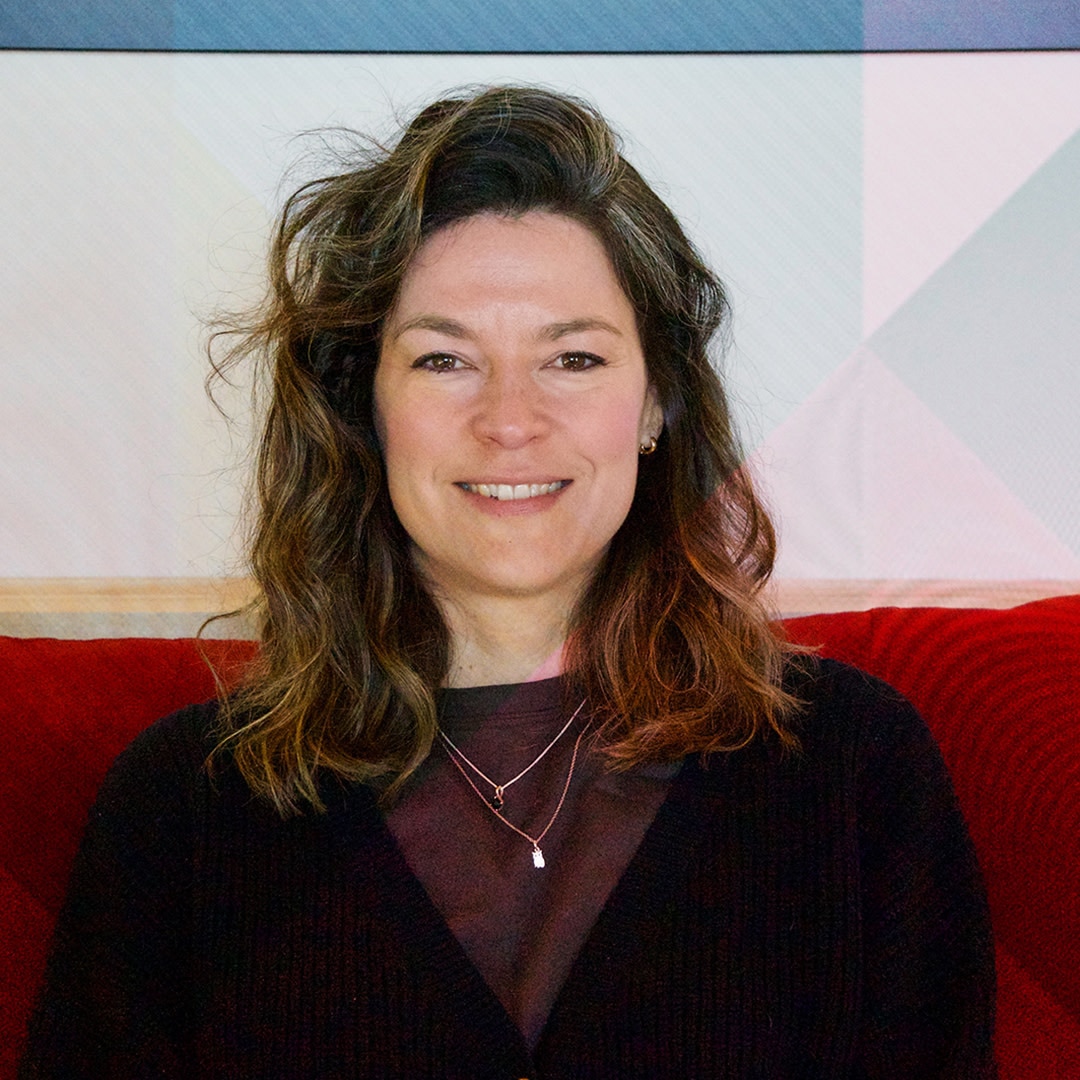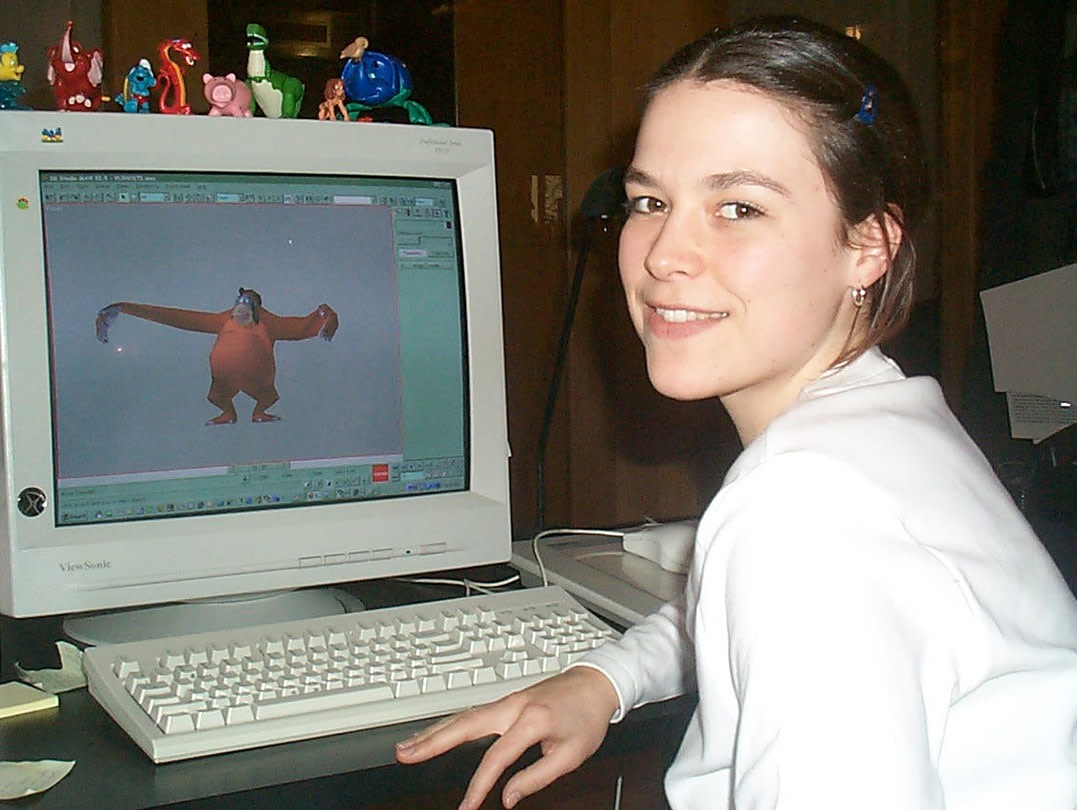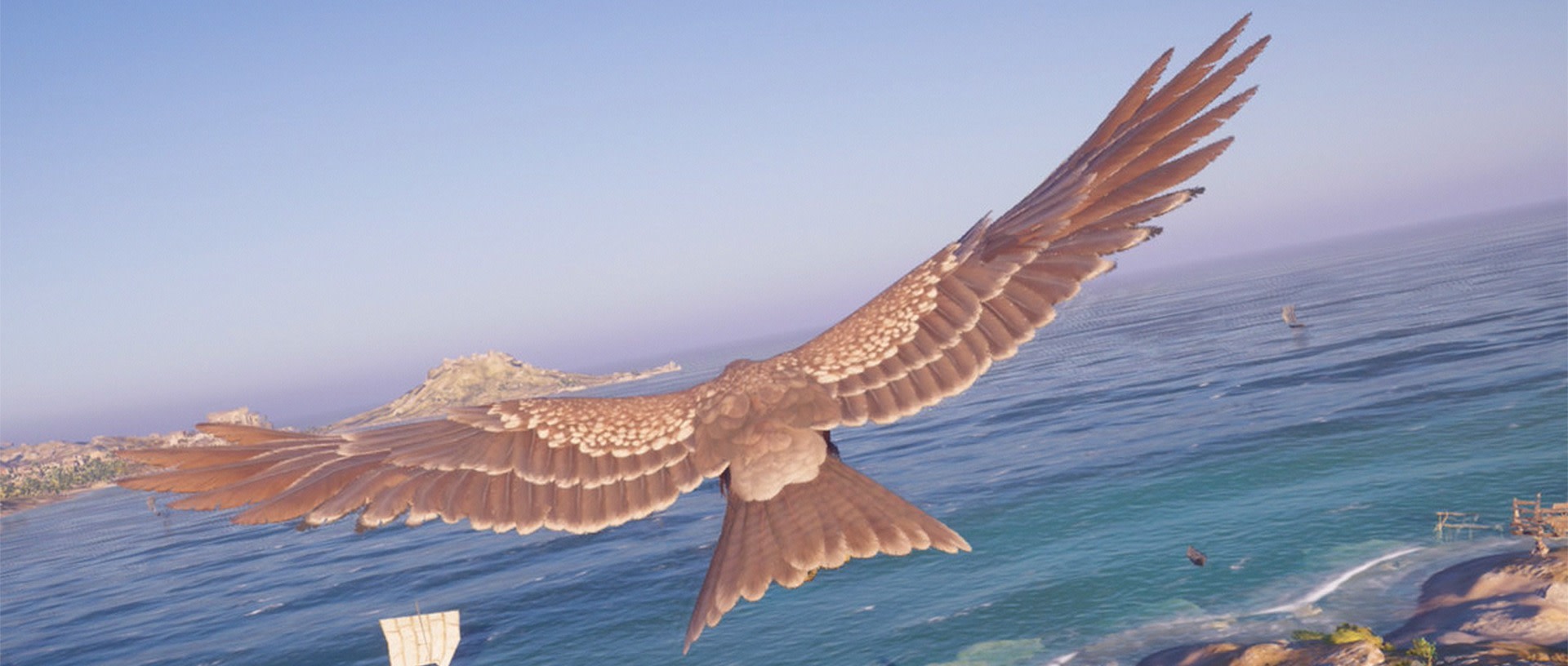She’s been working in animation for over twenty years – mostly for video games, but for movies as well. Sonia Pronovost is a Gameplay Animator at Ubisoft Montreal, and players may be familiar with her recent work on Assassin’s Creed, including her animations for the birds that accompany the series’ protagonists. In this interview, she tells us about her passion for drawing, her first steps in the industry, and her love of animals.
LOOKING AT YOUR CAREER PATH, IT SEEMS LIKE ANIMATION WAS ALWAYS YOUR GOAL. WHY DID YOU CHOOSE THIS FIELD?
SONIA PRONOVOST – It goes back a long way. As a kid, I spent huge amounts of time drawing, and I sometimes still do today. I was an introvert, and still am, and drawing was for me a sort of creative bubble that did me a lot of good. When I watched animation, especially Disney movies, I was fascinated to see how drawings, placed one after another, could “bring characters to life”. I remember making flip books in the corners of my notebooks, and it was an incredible feeling to see my drawings come to life. I was always attracted to the visual arts, so pursuing my studies in that field was a natural step for me. Animation has a little something extra, I think. It really feels like giving characters the illusion of life.
I was more oriented toward 2D animation, but when I was choosing my major in the 1990s, the industry wasn’t doing too well in North America. And 3D animation was also on the rise – everyone had seen Jurassic Park and Toy Story. It was an interesting path, and that’s how I made my choice.
WHAT LED YOU TO THE VIDEO GAME INDUSTRY, AND TO UBISOFT IN PARTICULAR, WHERE YOU STARTED YOUR CAREER IN 1999?
I started my career here after my studies in animation, which were mainly focused on movies. It was a combination of factors, because I finished my studies right when Ubisoft was looking for animators - they had launched the Montreal studio a little while earlier. But it was also at a time when there weren’t that many jobs in my field, and I was very open to the idea of working on video games because I had played a lot as a kid, especially on Nintendo NES. The timing and the fit were perfect, and I never regretted my choice!
“WHEN UBISOFT MONTREAL WAS FIRST GETTING STARTED, WE WERE ALL BEGINNERS. WE DIDN’T REALIZE WE WERE GOING TO BECOME PIONEERS. WE WERE DOING EVERYTHING FOR THE FIRST TIME, SO WE TRIED, AND FAILED, AND TRIED AGAIN. WE DID OUR BEST WITH THE TOOLS WE HAD AT THE TIME, AND IT WAS ALL VERY EXCITING.”

AS YOU SAY, THE MONTREAL STUDIO HAD JUST BEEN FOUNDED TWO YEARS EARLIER. WHAT MEMORIES DO YOU HAVE OF THAT TIME, IN THOSE FIRST FEW YEARS OF THE STUDIO’S EXISTENCE?
S.P. I was really young, so I was a bit of a naive 20-year-old, but I remember it being great! We were all beginners. We didn’t realize we were going to become pioneers. We were doing everything for the first time, so we tried, and failed, and tried again. We did our best with the tools we had at the time, and it was all very exciting. My first project was Jungle Book Rhythm N Groove, a dance game for the first PlayStation, and I remember working on the vultures. The characters were extremely “optimized” – there weren’t enough polygons for the knees to bend. It wasn’t easy to make them dance! We had to work with many optimization constraints, but we learned so much in those years. Those are some really positive memories for me.
YOU THEN LEFT TO WORK IN MOVIES FOR A WHILE, INCLUDING ON PROJECTS LIKE 300 AND AVATAR. WHAT WAS YOUR ROLE ON THOSE KINDS OF PROJECTS?
S. P. I did leave the video game industry for a bit, first to work on an animated film in 2001, then at a VFX studio where we worked on AAA movies. On 300, we worked on a lot of crowd animations – there were sometimes thousands of characters on screen, so it was impossible to film those scenes in the studio. We animated the characters by hand, and then another team duplicated them to create the crowd effect onscreen. On Avatar, I worked on the sequence in the “link room”, the place where the main characters lie down in beds to connect to their avatars. We added a few characters in the background to bring a little more life to the sequence, and we also did some “match-moving”, a technique to replace elements from the “live” shoot with 3D objects. It was less creative, of course, but it was still an important step for our post-production work.

BASED ON YOUR EXPERIENCE IN BOTH FIELDS, WHAT LINKS DO YOU SEE BETWEEN MOVIES AND VIDEO GAMES? DO THEY STILL HAVE ANYTHING TO TEACH EACH OTHER NOWADAYS?
S. P. When I first started at the VFX studio, I remember thinking that the pace of production seemed pretty slow. We spent a huge amount of time on each shot, working on the tiniest details. Everything had to be perfect. In video games, the pace is much faster, as we have to produce a lot of content in a very short time.
In general, I do see plenty of connections between the two in terms of animation, but in my experience, I feel like they’re two very distinct media that each have their own challenges and constraints. In the movies, you animate based on a specific camera angle, and you’re going for an exceptional level of quality almost down to the individual pixels. In games, you want to offer the player a character who’s fun to control and pleasant to look at. Even though the animations are very important, the gameplay takes precedence. And of course, we have to animate from every angle. Personally, I prefer the challenges of the gaming industry. It’s incredibly satisfying to create a character who’s enjoyable to play and to look at, and with whom the player will be spending hours and hours during their adventures. Do the two media still have anything to teach each other? Despite their differences, yes, absolutely. Animation for video games can draw inspiration from movies’ attention to detail, and the movies would be well served by certain time-saving methods from the gaming industry. I recently noticed that certain VFX studios have started to use the Unreal engine to create previews and post-roll, which simplifies the job significantly. So that’s a real example of convergence!
THESE DAYS, YOUR SPECIALTY IS ANIMALS – AND MORE SPECIFICALLY, BIRDS. YOU ANIMATED THE PROTAGONISTS’ THREE FEATHERED COMPANIONS IN THE LAST ASSASSIN’S CREED TRILOGY. DID THAT RELATE TO A PARTICULAR INTEREST OF YOURS FOR WILDLIFE?
S. P. I’ve always been an animal lover. I believe I have a natural and intense connection with animals, and I’ve always had animals around me. I even lived with a turtle for thirty years. So as part of that strong interest, I observe them very closely - more so than humans. As an introvert, that always seemed easier for me, and I love getting to know their personalities. I can spend hours watching birds or playing with my three cats.
And I’d say that animation is often about reproducing what you see in a credible way, so it has always been more natural and easier for me to animate animals. Whenever I have a bit of free time to create animations for myself, I always work on an animal, never a person. And since I’ve done a huge amount of it, I’ve developed a real knack for it.
YOU REALLY LOVE BIRDS. HOW DID YOU GO ABOUT LEARNING TO ANIMATE THEM? WHAT DO YOU THINK IS THE IDEAL LEARNING TECHNIQUE?
S. P. I don’t think there’s any particular technique. As I was saying, observation is key. No matter what character you’re working on, everything depends on preparation. Before animating anything, I look at massive amounts of visual references, and if possible, I try to study how the animals or birds move in real life. I watch how their paws move – do they just graze the ground, or do they seem heavy? And how their movements change when they’re hunting. I learn as much as I can about the species. Then I develop their personality, I run many animation tests, and sometimes just create poses to establish their flavor. But there’s really no great secret to it, you just have to put in many hours of work to fine-tune a character and deliver the best possible performance. It’s like an actor’s work, actually – you have to prepare for the character.

THE THREE BIRDS YOU’VE ANIMATED FOR ASSASSIN’S CREED HAVE A SPECIAL CONNECTION WITH THEIR MASTERS, AND THEREFORE WITH THE PLAYER. HOW DO YOU MAKE THEM UNIQUE IN TERMS OF THEIR ANIMATIONS?
S. P. Communicating emotions takes time. And in video games, there aren’t many sequences where that’s possible, because the player is always in motion. But to achieve this, you have to start by applying all the principles of animation. Otherwise, the bird won’t be realistic. And beyond technique, the animal must also have a certain personality and charisma so we can form a connection. For those birds, I tried to reproduce the characteristic movements of their species as much as possible – the little details that you can recognize and believe in. For example, at quiet moments in the game, the bird comes and lands on his master’s arm. This creates a moment of interaction where the hero can feed him or scratch his neck. It’s in those instances that you feel emotions and form a connection with the bird.
WHEN YOU ANIMATE AN ANIMAL, AND BIRDS SPECIFICALLY, WHAT DO YOU TRY TO COMMUNICATE?
S. P. First of all, I think it’s important to say that my best animations are the ones for which I’ve had all the creative freedom I needed. And that’s something I have on Assassin's Creed, and something I can communicate to our players: a connection. I want them to recognize it as a real animal or bird, form an attachment, and make connections with their memories. I want them to remember that moment spent with the animal in the game just as they would a real-life experience.
WHAT IS YOUR MOST OUTSTANDING MEMORY SO FAR AT UBISOFT?
S. P. It’s hard to choose! Maybe the first time I saw my animation in a game, when I picked up the controller and interacted with it. But to be honest, there's not one specific memory, but more of a multitude of positive moments that have shaped my career and are part of my history. The feeling of having been a part of this creative industry from its earliest days in Quebec – that’s what really stands out to me.